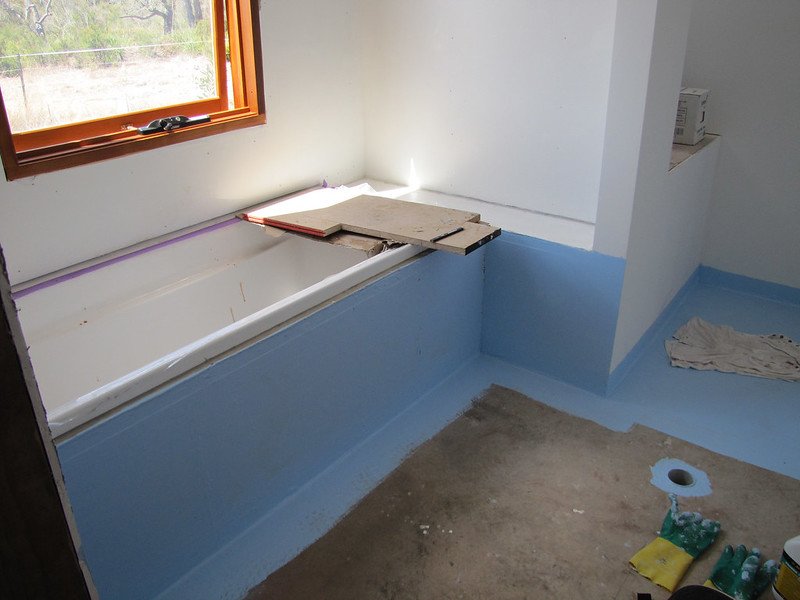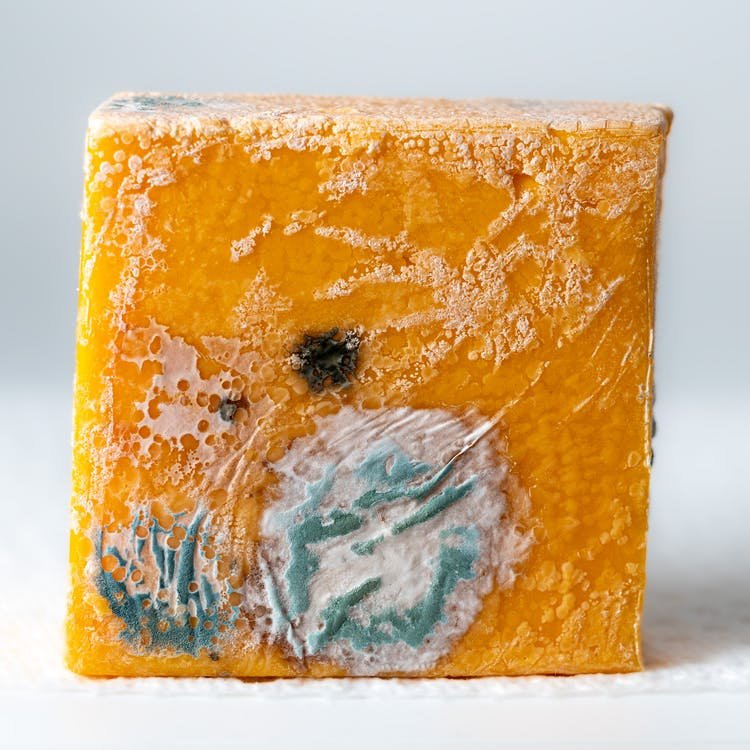Mold can be a huge problem in homes. It can cause various health problems, and it’s important to take steps to prevent it from growing in your home. One way to help keep mold at bay is by waterproofing your home.

Waterproofing your home can help seal up any cracks or crevices where water might enter, which can help prevent mold from growing. But before we show you how waterproofing can help with mold overgrowth, let’s first see how mold is formed.
What Is Mold? and How Is Mold Formed?
Mold is a type of fungus that grows in damp, humid conditions. It can be black, white, green, or brown and often looks like spots or smudges. Mold can form on almost any surface, including wood, paper, carpet, food, and insulation.
When mold spores land on a damp surface, they start to grow. Mold needs four things to grow: water, food (like cellulose or dust), the right temperature (between 40 and 100 degrees Fahrenheit), and oxygen.
So if you have an area in your home that’s damp and has poor ventilation, it’s more likely that mold will grow there.
There are many different types of mold. Some molds are more harmful than others, and some can cause serious health problems. The most common type of mold found in homes is black mold, also known as Stachybotrys chartarum.
Black mold is often greenish-black or brown and has a slimy texture. Removing black mold from your home as soon as you see it is important because it can produce toxins that can make you sick.
Molds can also be different from one region to another. But while the geographical location can affect the overgrowth severity, similar mold types are found in and around the United States.
Now that we know what mold is and how mold is formed, let’s look at waterproofing and how it can help with mold remediation.
Read Also:
What Is Waterproofing?
Waterproofing is the process of making an object or structure water-resistant or impervious to water. It can be done using various methods and materials, including coatings, membranes, and sealants.
Waterproofing is often used on buildings and other structures to prevent water from entering and causing damage. It’s also used on clothing and gear to keep people dry in wet conditions.
There are two main types of waterproofing: internal waterproofing and external waterproofing. Internal waterproofing is when you apply a waterproof coating or membrane to the inside of a structure, like a basement wall. Exterior waterproofing is when you use a layer or membrane to the outside of a structure, like the foundation of a house.
External waterproofing is usually done by professional contractors, but you can do internal waterproofing yourself with the right products. Waterproofing can help prevent mold growth in your home by keeping water from getting in and creating damp conditions where mold needs to grow.
How Does Waterproofing Help with Mold?
Waterproofing helps with mold in the following ways:
It keeps the water out of your house: Water is the source of all moisture, and moisture is what leads to mold. If there is no moisture, there will be no mold.
It prevents damp conditions: Dampness is what allows mold to grow. By waterproofing your home, you can help prevent mold growth by keeping the area dry.
It helps with ventilation: good ventilation is important in preventing mold growth. When an area is well-ventilated, it helps keep the air moving, preventing moisture from accumulating and creating a breeding ground for mold.
The case for waterproofing as a possible remediation measure for mold remediation is quite simple. Mold grows due to damp conditions. If the humidity levels remain high for an extended period, it results in mold overgrowth.
However, with waterproofing, you can control your house’s moisture level. But while this is a viable solution, it’s also important to remember that this method has a few drawbacks.
If you are serious about using waterproofing to prevent mold, you need to ensure that you waterproof your homes regularly. While the frequency is up to your discretion, the costs of maintaining your household will increase drastically.
In addition, it’s also important to remember that waterproofing alone can only do so much. The best way to tackle mold is to address the problem at its source. This means that you need to find and fix the leak causing the dampness in your home.
Only then can you truly say that you have rid your house of mold? In addition, it’s also important to pair waterproofing with other mold preventive measures for an effective mold remediation plan.
Waterproofing your home can help prevent mold growth by keeping water out and preventing damp conditions. However, it is important to remember that waterproofing alone cannot solve the mold problem. The best way to address mold is to find and fix the source of the moisture.









